PHOTO ESSAY
Inside the Onderstepoort Animal Blood Bank, where dogs are prolific donors and lifesavers
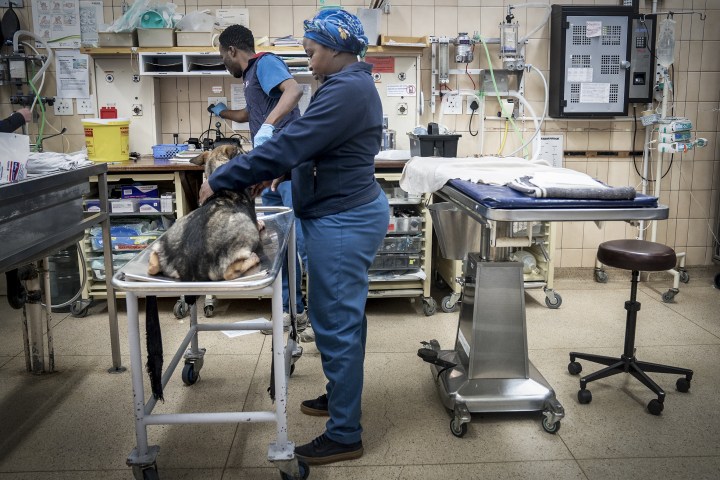
Since inception in the mid-1990s, the Onderstepoort Animal Blood Bank (OABB) has helped many dogs, cats and even prized stud sheep, horses and cattle in need of life-saving blood transfusions. Dogs are some of the blood bank's prolific donors, coming to the rescue of their fellow canines in exchange for a treat and dollops of affection.
Jaco Malan watches as his five-year-old Belgian Malinois, Jurg, is attended to by veterinary sister Marizelle de Clercq from the Onderstepoort Veterinary Academic Hospital (OVAH) at the University of Pretoria’s faculty of Veterinary Science. Jurg is a narcotics detection dog and is about to donate blood. He shows no sign of distress or anxiety and seems to love the attention.
He allows De Clercq to collect a blood sample, which is used to assess whether he is healthy enough to donate. Satisfied that he is healthy, Jurg is placed on the examination table to begin the blood donation process. A small area around his jugular vein is clipped, a needle is inserted into the vein and blood runs into a blood bag.
Some canine blood donors need mild sedation but Jurg goes without and is gently held down by his owner. Within minutes, the blood bag is filled and Jurg gets his treats.
De Clercq, who has been involved in collecting donated blood and run the donor database for more than 20 years, said, “Jurg is a very socialised blood donor. He knows what to expect and tolerates the blood collection well. He is always eager to please, very obedient and due to his high quality training, he does not need any sedation before the process.”
She explains the reason for the treats is because the blood collection process needs to be associated with a positive experience for the donor and their owner. “Some pets thrive on treats and some prefer attention and affection. We all want to know and be rewarded after a job is done well.”
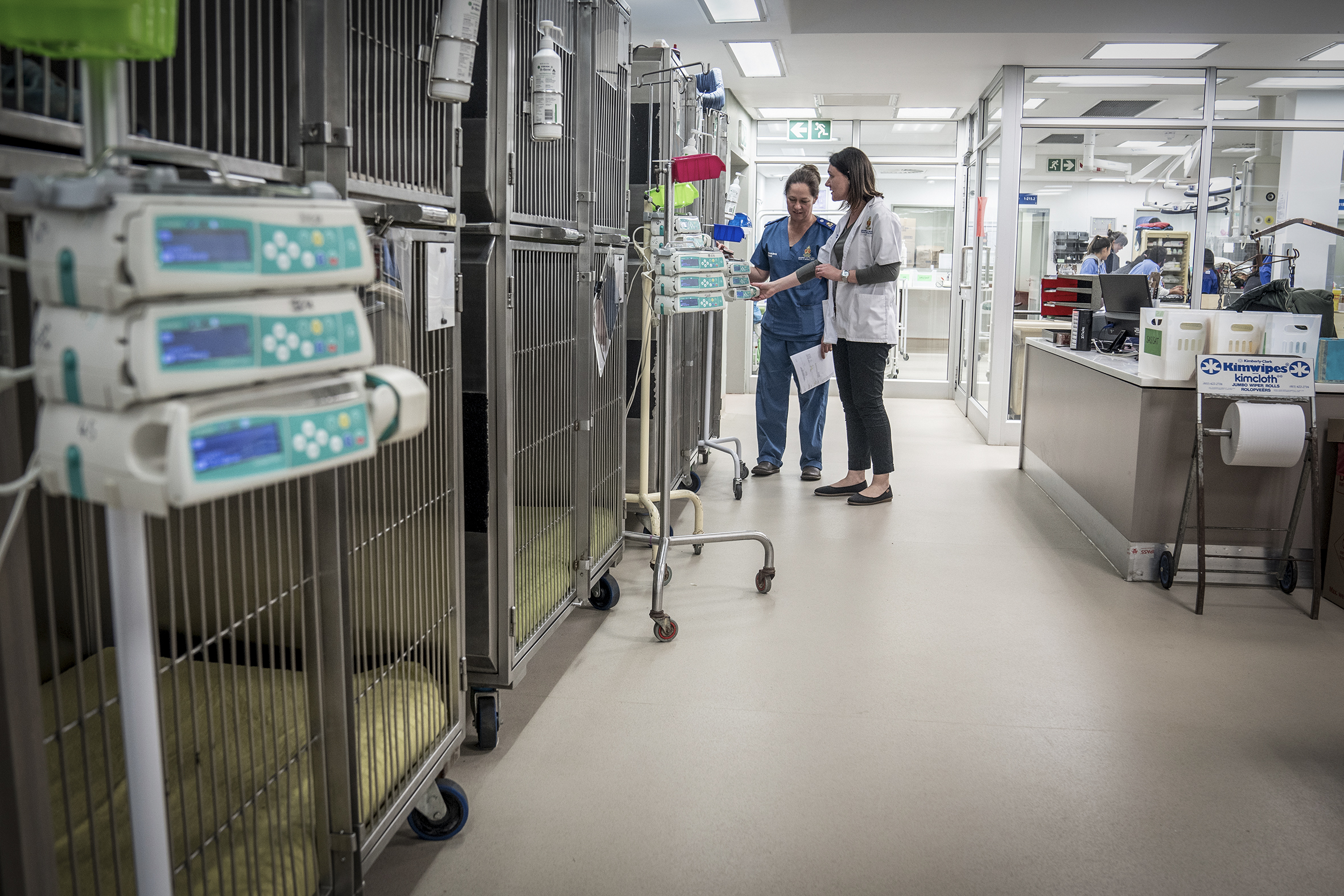
Dr Yolandi Rautenbach (right) and Marizelle de Clercq in the High Care Unit of the Onderstepoort Veterinary Academic Hospital. (Photo: Shiraaz Mohamed)
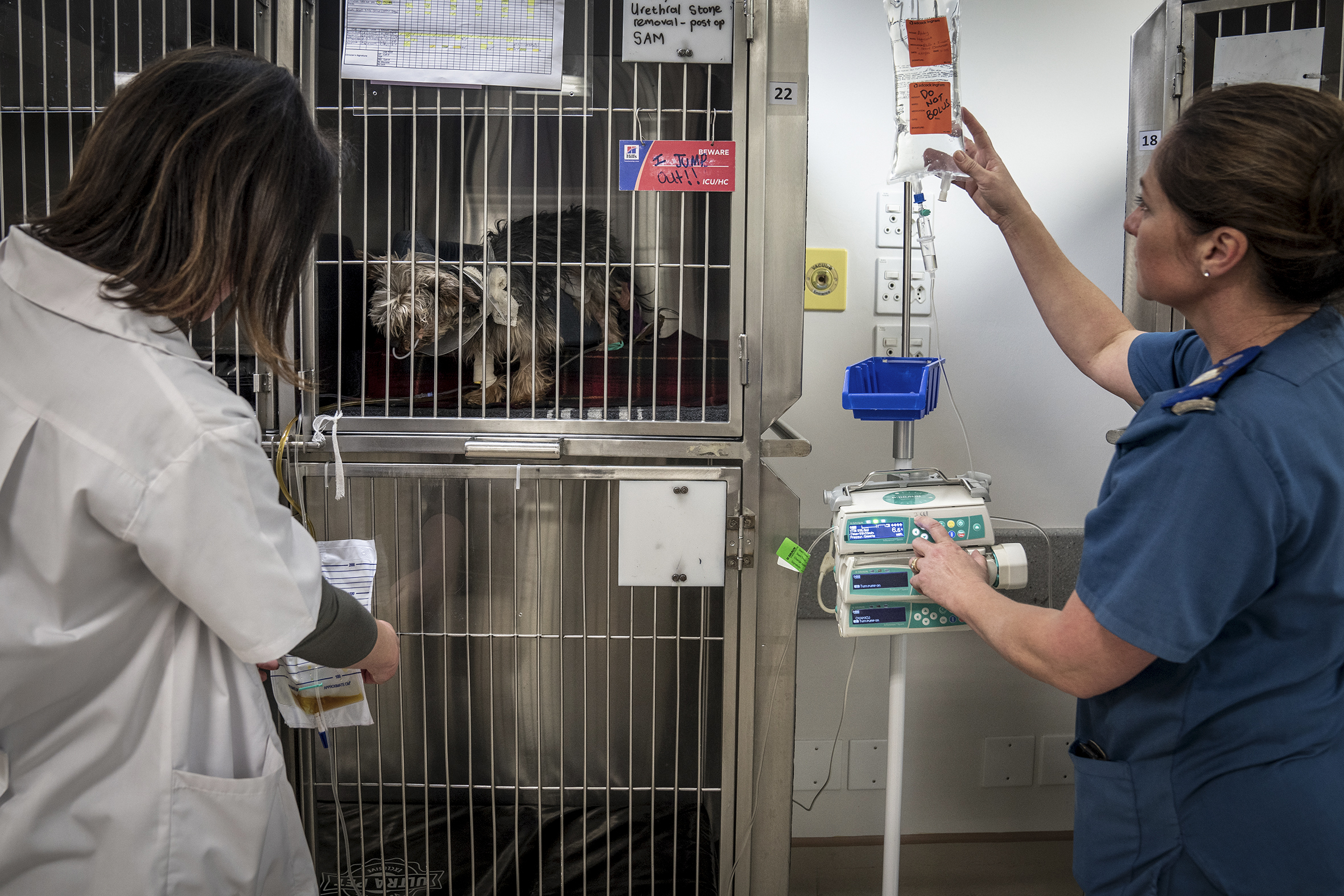
Dr Yolandi Rautenbach (left) and Marizelle de Clercq attending to a patient’s infusion pump in the High Care Unit. (Photo: Shiraaz Mohamed)
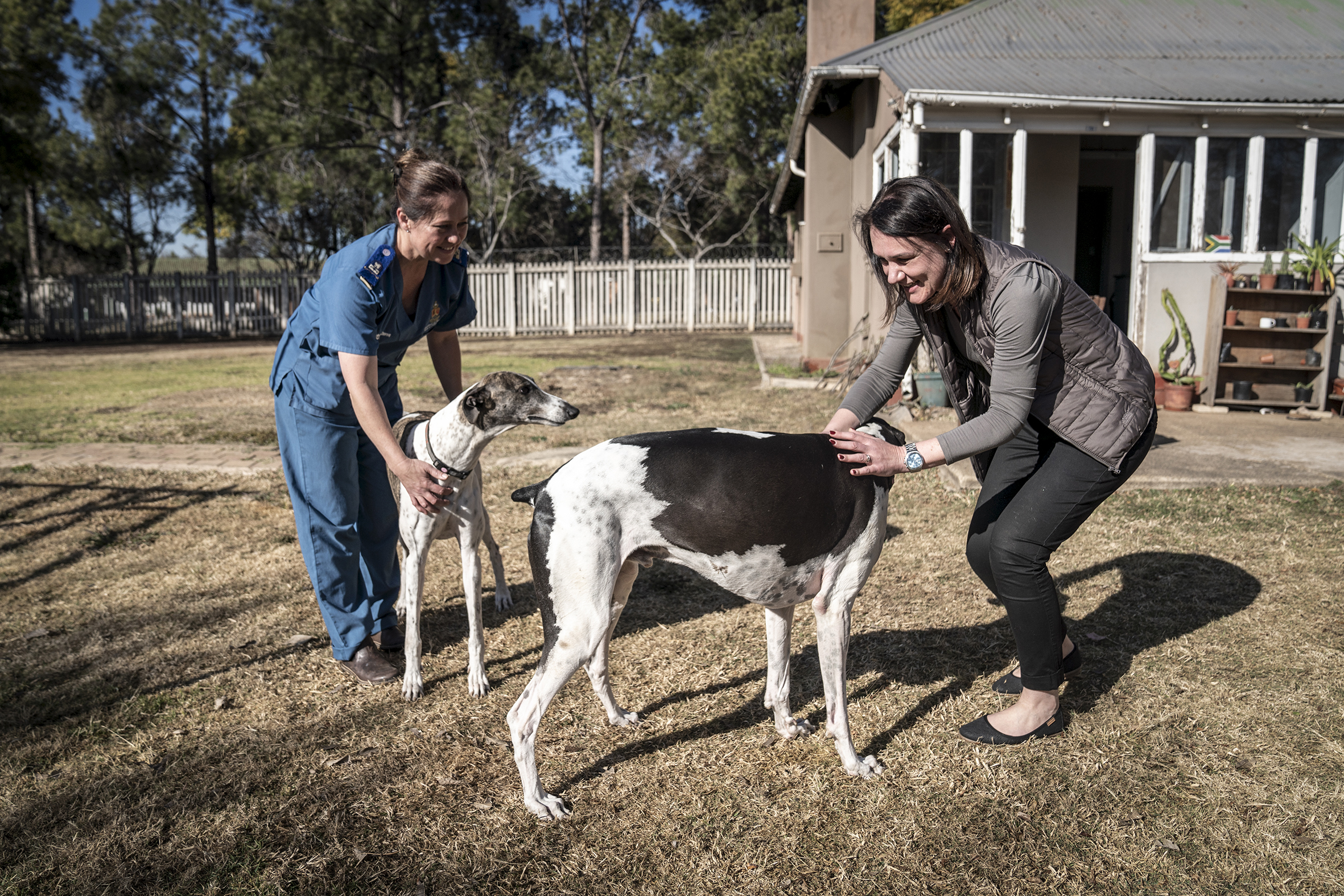
Dr Yolandi Rautenbach (right), specialist veterinary clinical pathologist and head of the Faculty of Veterinary Science’s Onderstepoort Animal Blood Bank, and Marizelle de Clercq, with Rachel and Pablo, two of the faculty’s blood donors. (Photo: Shiraaz Mohamed)

Marizelle de Clercq gently restrains Jurg during the blood donation. Some canine blood donors need to be slightly sedated, but Jurg takes this in his stride. (Photo: Shiraaz Mohamed)
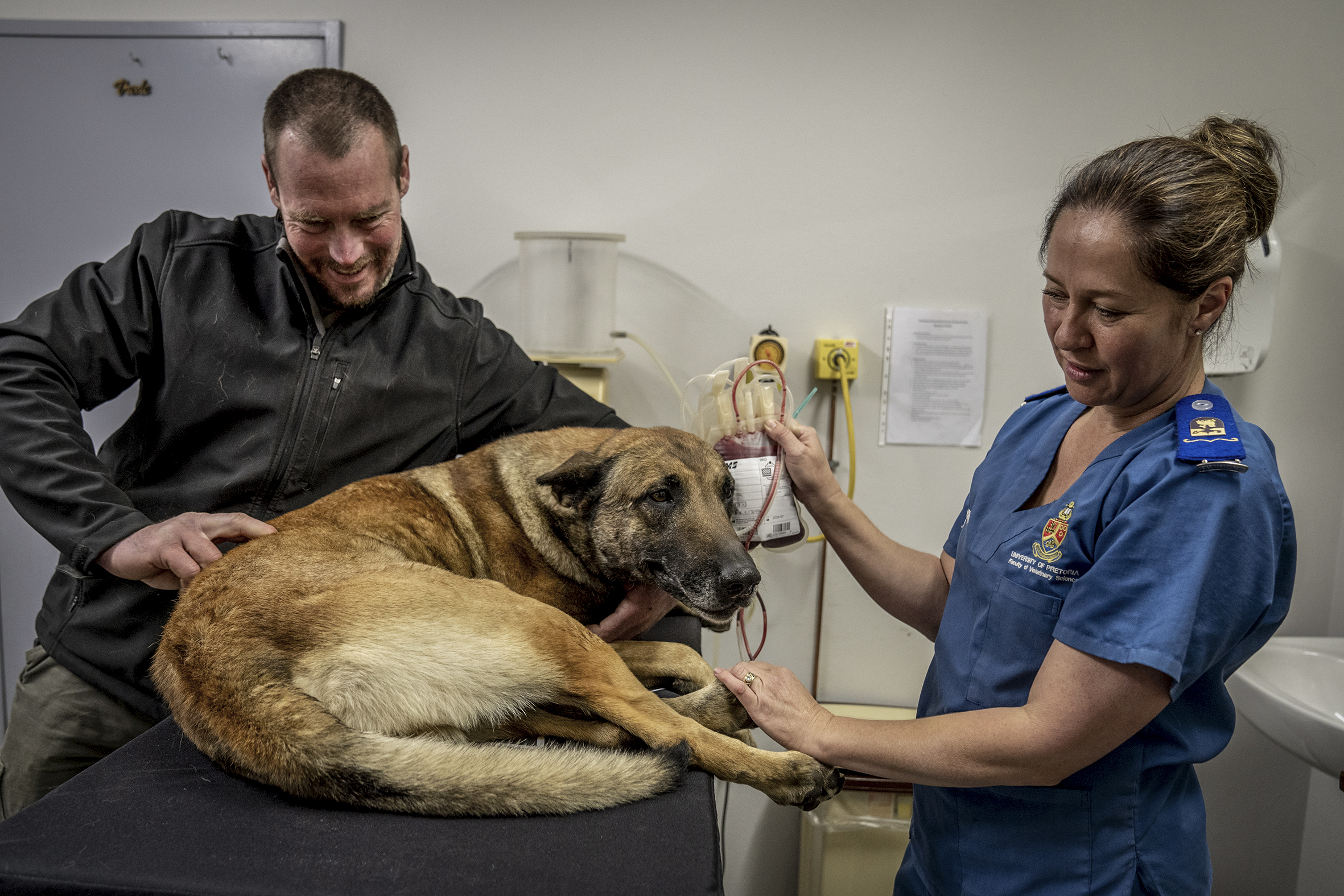
Marizelle de Clercq holds up the filled blood collection bag after the donation as Jurg’s owner, Jaco Malan, looks on. (Photo: Shiraaz Mohamed)
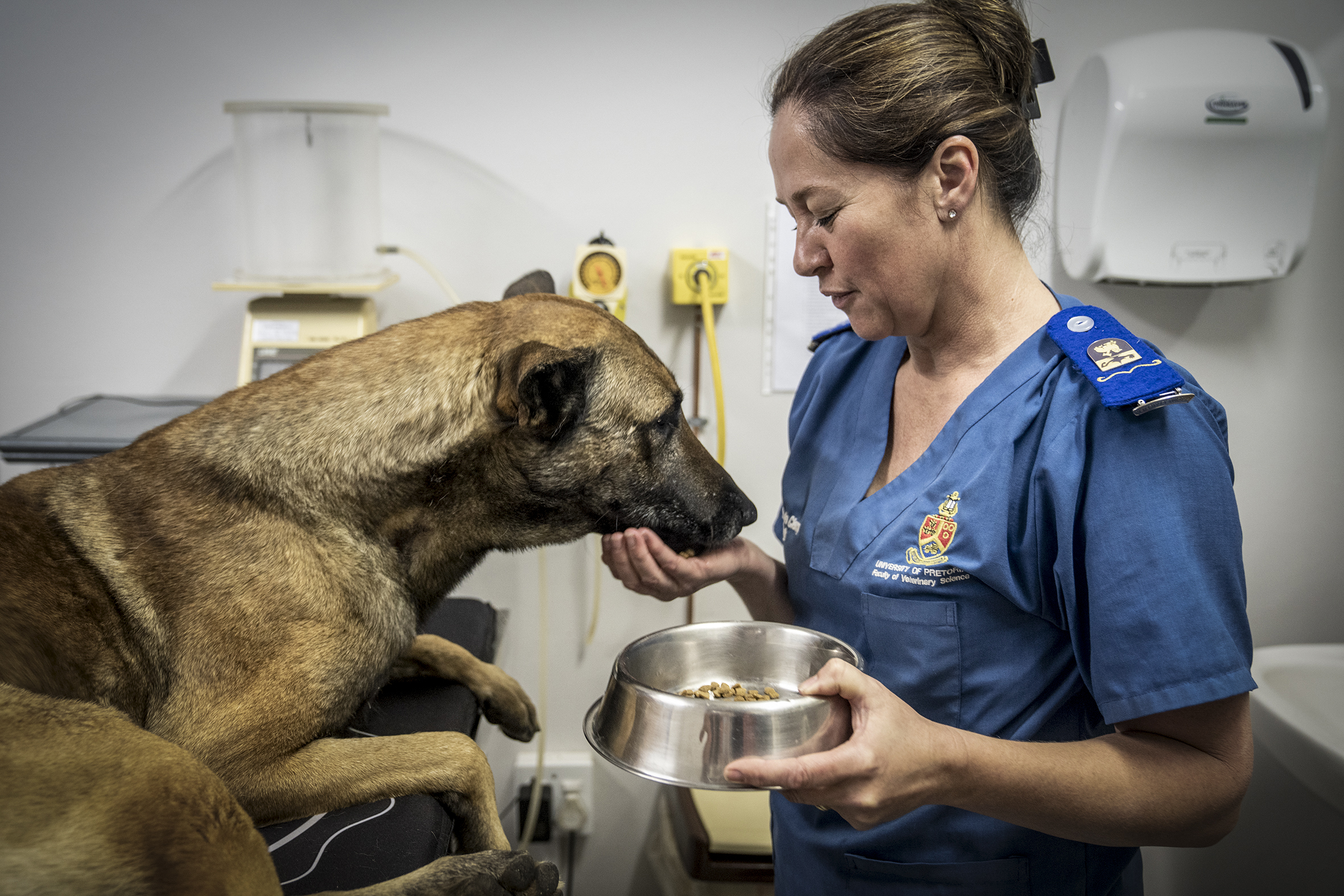
Marizelle de Clercq gives treats and ample love to Jurg after the blood donation. (Photo: Shiraaz Mohamed)
Malan runs a company that trains explosive, detection and tracking dogs. He also sells to pre-vetted companies and has more than one dog that donates blood. He told Daily Maverick, “When he gets off the table he is his normal self, but I don’t let him work on the same day. Because he is healthy, there are no side effects. There is, however, an increase in his appetite on cold days.”
In return, Malan’s canine and other donor pets receive regular health check-ups and free vaccinations and deworming treatment when needed. Owners also receive vouchers for their pets.
The donors are treated as humanely as possible, and in accordance with strict ethical and scientific measures. Blood is only collected from animals that have never had a blood transfusion of any kind themselves. Donor dogs are typically up to eight years in age. Only larger breeds are allowed to donate, because donor dogs must weigh more than 25kgs. They can donate every eight to 12 weeks, with up to 450 millilitres being collected at a time.
Like humans, dogs have blood types. There are eight commonly identified canine blood type phenotypes. And animals too can have a bad reaction when receiving donor blood that is not of the same type as their own. Therefore, blood compatibility testing is crucial before they can receive a transfusion, although it is generally safe to give dogs any type of canine blood at least once. More care is needed, however, if further transfusions are needed. In such cases blood typing and other tests must be done to ensure that a dog does not have a severe reaction.
The collected unit of blood is then processed in order for it to save as many lives as possible. Jurg’s donation could save up to three dogs’ lives. It is processed into packets of red blood cells and either fresh or frozen plasma.
Fresh whole blood may be used immediately or stored for up to 21 days. Packed red blood cells can be safely stored for 42 days, while frozen plasma can be kept for up to five years.
Whole blood is used for trauma cases resulting in severe bleeding, in particular car crashes, and also to replace blood during surgical procedures on blood-rich organs, like the liver.
Packed red blood cells are commonly used in conditions where the red blood cells are broken down. Tick-borne diseases like babesiosis (common in South Africa), where the parasite directly destroys the cells, warrants the need for packed red cells to replace the loss.
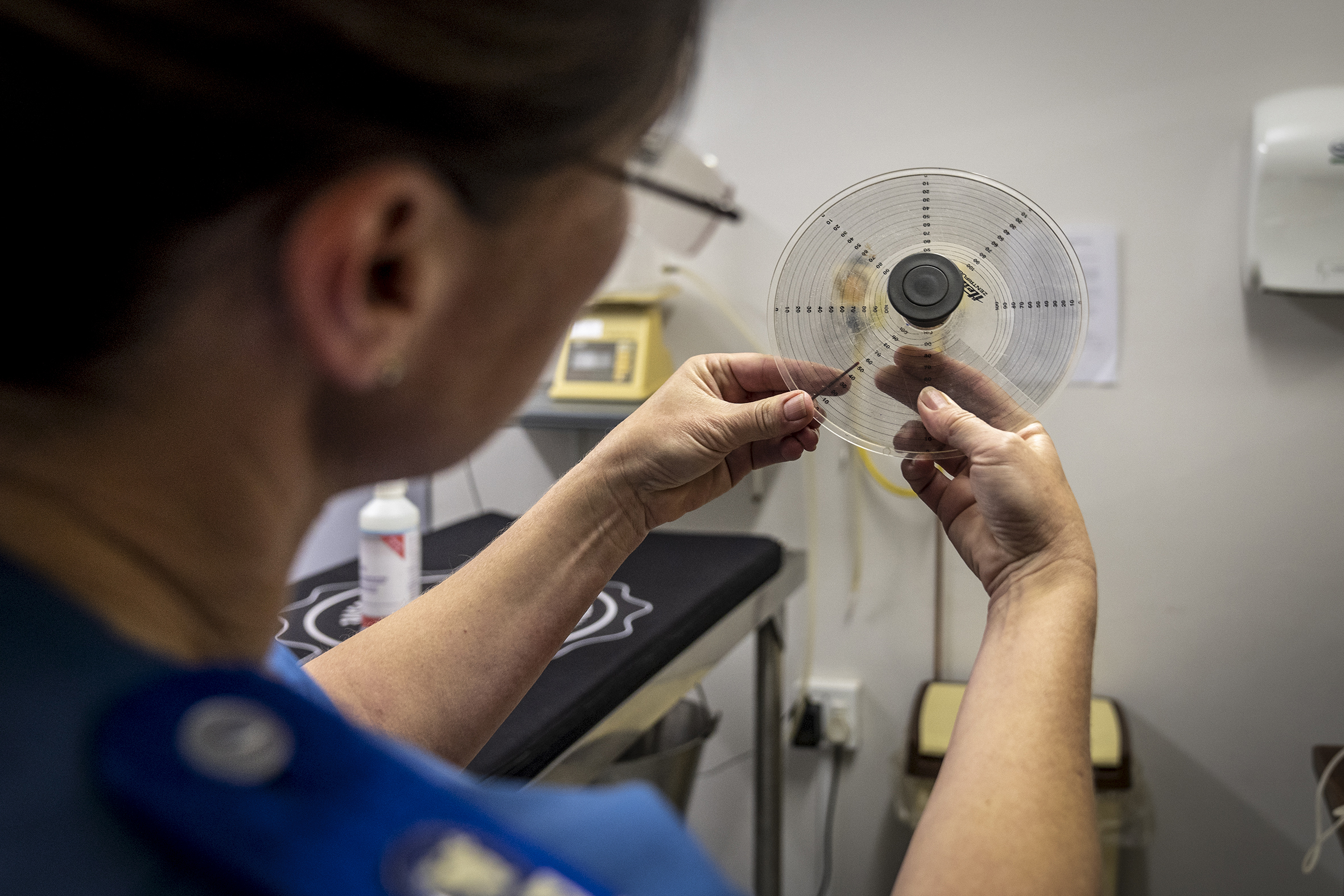
Marizelle de Clercq measuring the packed cell volume to determine whether Jurg is healthy enough to donate blood. (Photo: Shiraaz Mohamed)
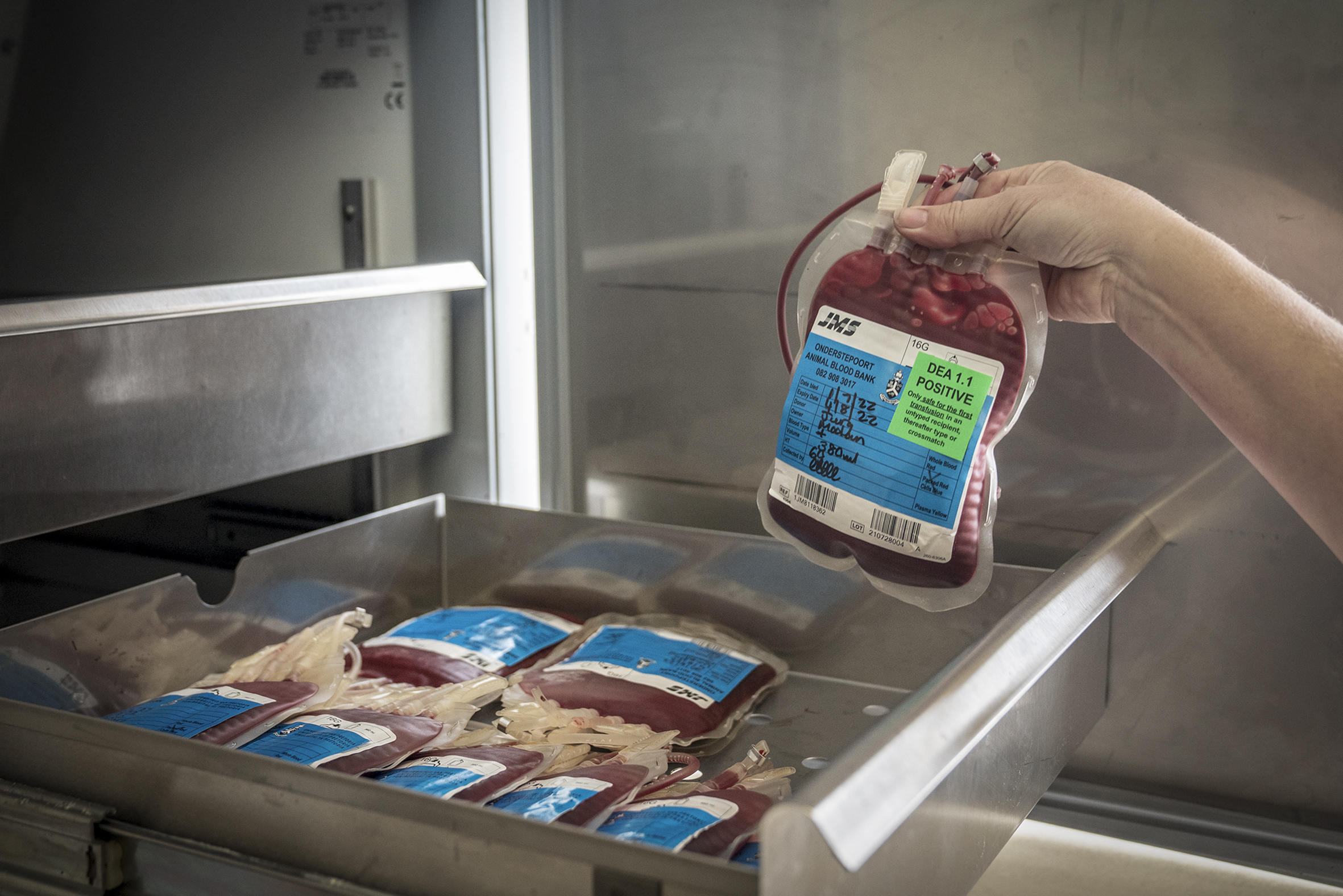
Correct identification and storage of the blood products are essential for maximum efficiency, safety and shelf life. (Photo: Shiraaz Mohamed)
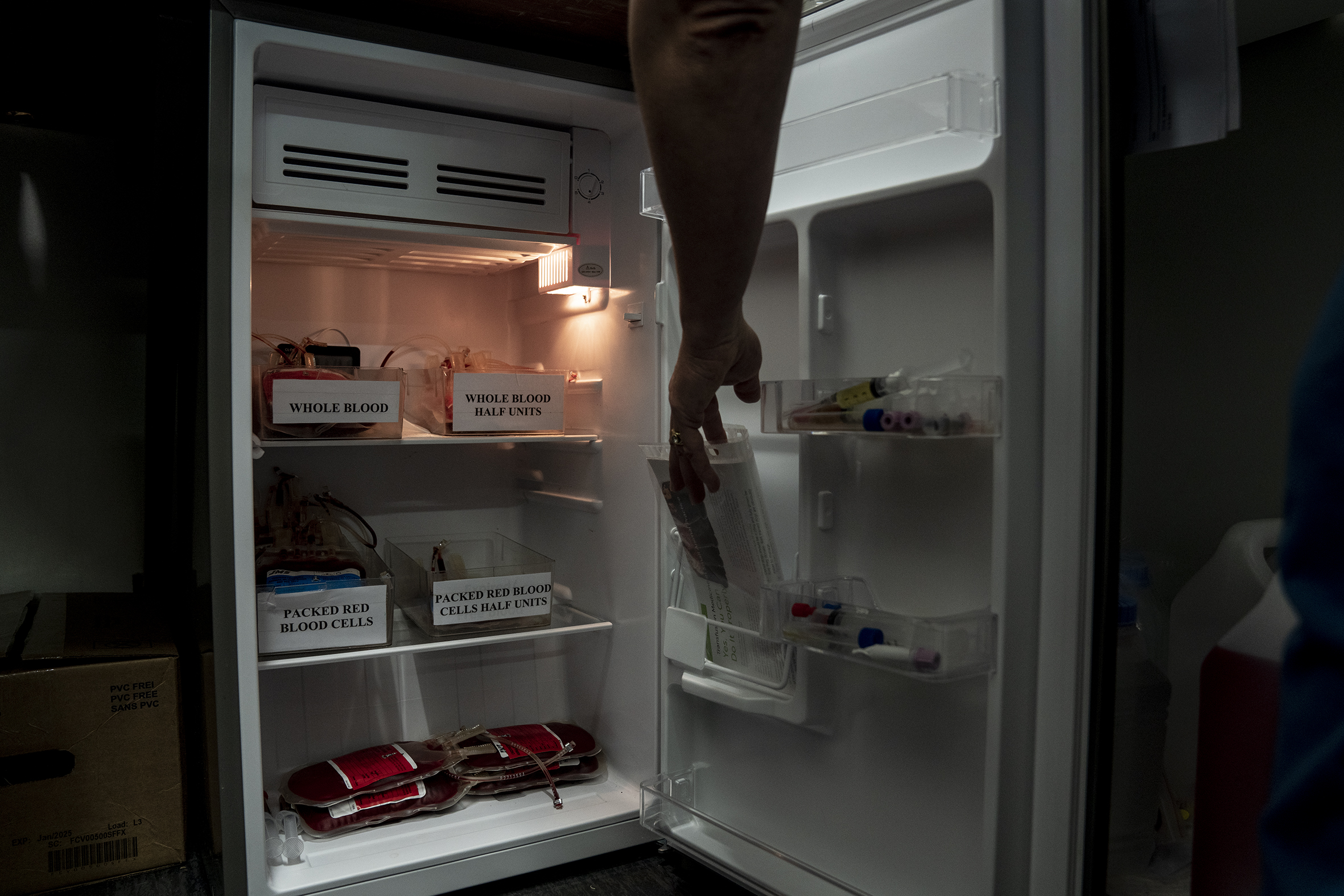
Several units of blood are available throughout the OVAH to be used during routine procedures, emergencies and certain diseases. (Photo: Shiraaz Mohamed)
Plasma is often used in certain toxicities (snake bites), to replace the protein-clotting factors that are required for normal blood clotting. Plasma is also indicated in animals with congenital bleeding disorders.
About 360 bags of canine blood are collected annually and processed at the OABB’s in-house facilities where all blood products are stored and monitored in a dedicated blood bank with continuous temperature monitoring of fridges and freezers temperature to ensure quality control.
The blood bank’s Dr Yolandi Rautenbach, a senior lecturer and specialist in Veterinary Clinical Pathology in the Department of Companion Animal Clinical Studies, says: “Over the past six years, OABB has on average provided 705 bags of various types of canine blood products annually, mainly to dogs treated at OVAH.”
Similar to humans, sometimes pets also require life-saving blood transfusions. In case of an emergency that requires fresh blood, eight greyhounds are always on standby on the UP Onderstepoort campus. Greyhounds make good donors because they have a very high red blood count compared to that of other dog breeds.
Blood from the OABB is used for the hospital’s patients, and some is sold to veterinary practices in Pretoria and beyond that might experience blood stock shortages.
Dr Kelly Flanagan from the Lovemore Park Animal Hospital in Port Elizabeth is one of Ondersterpoort’s regular buyers. She says donor blood has saved many of her patients over the years: “We have a patient, Billy Muton, a Scottish terrier who has Von Willebrand disease… a common inherited condition that can make you bleed more easily than normal…
“He does not have the necessary clotting factors needed to clot when he is injured. A tiny cut is enough to make him bleed uncontrollably. When this happens the only way to provide the clotting factors and stop the bleed is to give him a plasma transfusion.”
Flanagan says they order plasma regularly, which the owners keep in a special plasma freezer. When Billy needs a transfusion, his owners bring him and the plasma to the practice so they can perform the transfusion. “Without these transfusions Billy would be dead by now.” DM


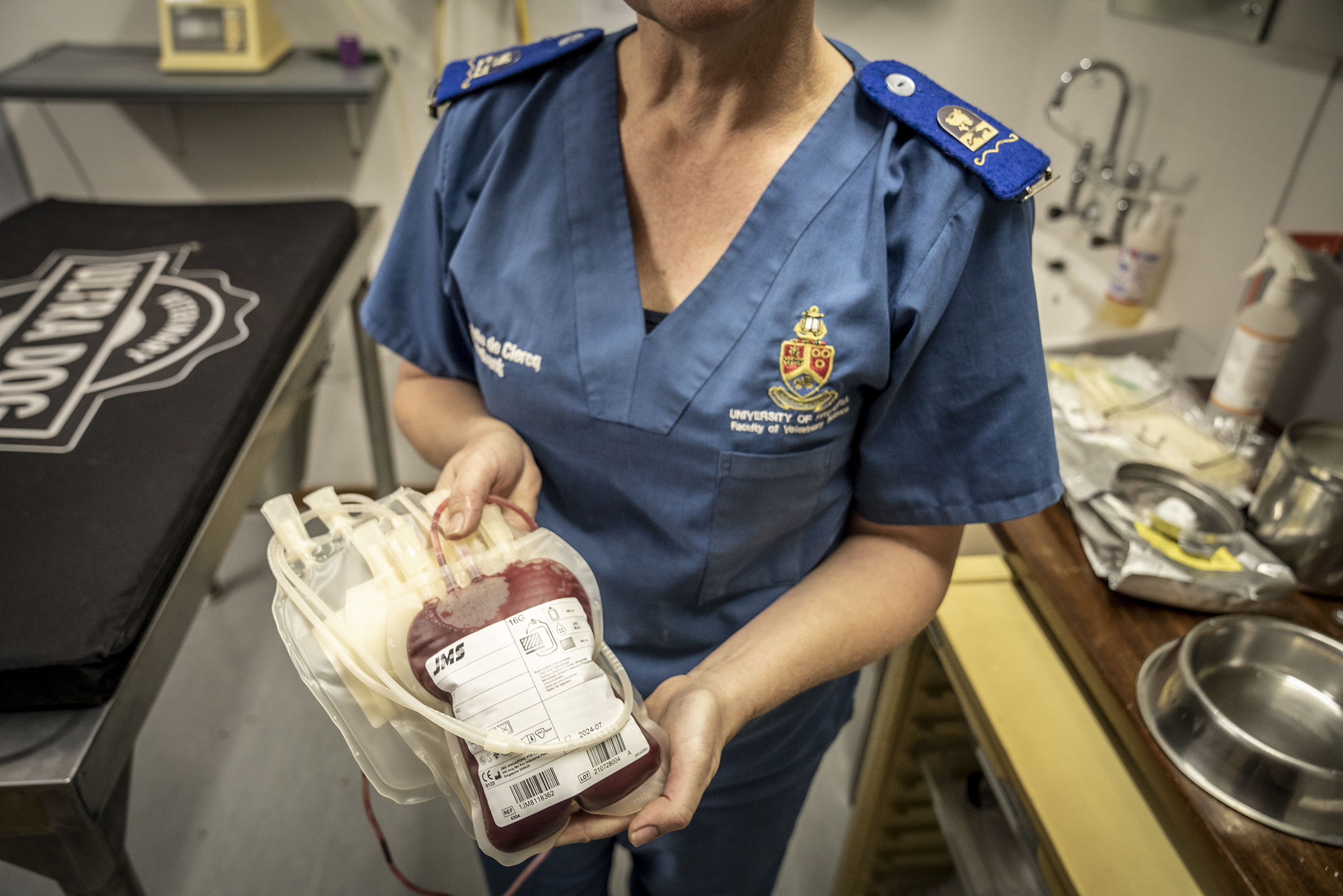



















 Become an Insider
Become an Insider
Comments - Please login in order to comment.